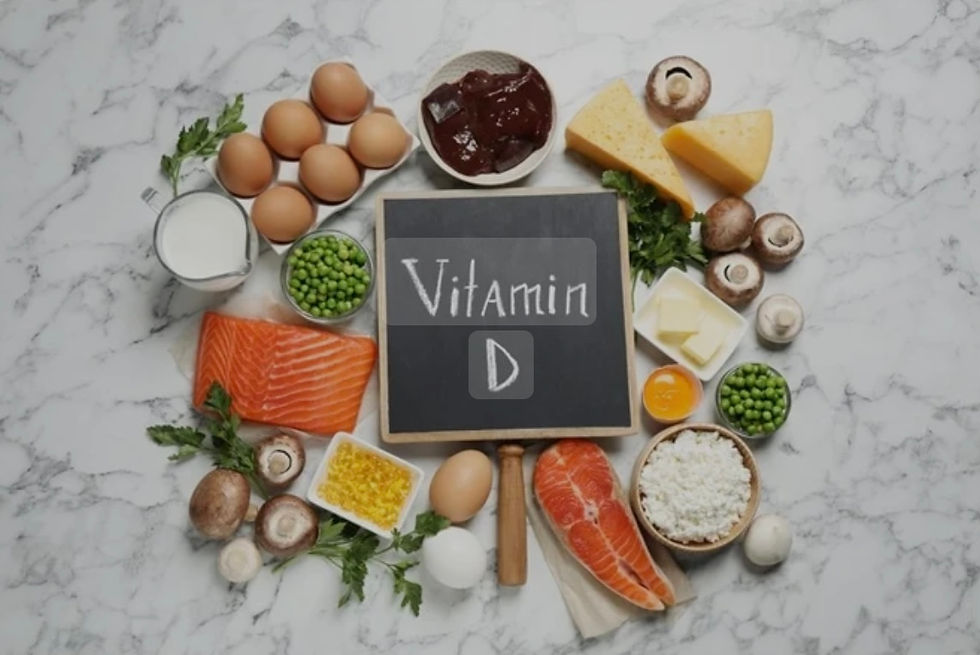What Is Creatine And Why Should You Consider Taking It?
- Laura Essex
- Apr 28, 2025
- 4 min read
As a self-confessed supplement junkie and fitness fanatic I can tell you there are so many powders, pills and supplements available, it's hard to figure out what works and what is safe and effective. I had heard of creatine but honestly, thought it was something men and competitive bodybuilders used, not a regular fitness-goer like myself. At 58, I found myself at a muscle-building plateau and looking for ways to help improve performance and frankly, just beef up my muscle mass. As I began to research, I found study after study and so many articles on creatine, specially for use in women. I was intrigued and decided to take a deep dive. Here is what I discovered.

What Is Creatine
Creatine is naturally produced in the body as an amino acid and is present in food such as red meat and seafood. It has a critical role in producing adenosine triphosphate (ATP) which is the main source of energy in your cells. It helps to supply your muscles with energy during exercise which enables you to push harder and recover faster with less muscle soreness. Women tend to have lower natural creatine stores than men according to a 2021 study by the National Library of Medicine. Women also tend to get less creatine through their daily diet which makes this a good supplement to consider.
Creatine And Hormonal Changes
When estrogen levels decrease during perimenopause and menopause it affects the amount of energy, strength and inflammation in your entire body, including your brain, muscles, tendons and ligaments. These changes mean it will become more difficult to build and maintain muscle mass. Creatine can help increase stamina, performance and building of muscle tissue, including your heart - one of your most important muscles. Supplementation will work best when done in conjunction with a strength/resistance training program.
Creatine For Brain Health
Several recent studies have shown exciting cognitive advantages of taking creatine including improved short term memory, mood enhancement and reduced mental fatigue. Supplementation with creatine supports ATP levels when there is a high demand in the brain during aging, sleep deprivation, stress, lowering levels of estrogen and during times of depression or mental health concerns.
How To Choose The Right Brand And Dosage
Creatine comes in powders, pills and gummies. Look for the most straightforward list of ingredients, check for fillers or additives, third party testing or made in an FDA registered facility. Look for creatine monohydrate which is the most optimal form with the most study data.
Powder:
Pros: Most cost-effective, customizable dosage, potentially faster absorption, and widely available.
Cons: Can have a strong taste, requires mixing with liquid, and might be less convenient.
Gummies:
Pros: Convenient, tasty, and easy to consume, especially for those who dislike the taste of powder.
Cons: May contain added sugars and preservatives, and dosage control can be less precise than with powder.
Pills:
Pros: Convenient, easy to take, and can be a good option for those who prefer a less messy supplement, says NDL Pro-Health.
Cons: May contain more ingredients than powder, and some may be less effective if they contain fillers.
Dosage: optional loading phase
A creatine loading phase, taking 20 - 25 grams of creatine daily for 5 - 7 days, can rapidly increase your muscle stores of creatine by 10 - 40%. After the loading phase, you can maintain your stores of creatine by taking a lower dose of 5 grams daily.
It is up to your personal preference to decide whether or not to begin with a loading phase. Studies show that lower doses of creatine (5 grams) taken once daily can be equally effective at maximizing your stores of creatine, it just may take a bit longer.
My Creatine Results
I started taking creatine 14 months ago and I don't plan to stop anytime soon! After four weeks I began to notice I felt stronger during weight lifting, after six weeks I began to feel an increase in my endurance, at eight weeks I saw a physical difference in my muscle mass, there was momentum building.
I chose Create Gummies from Create Wellness. The recommended serving is 3 gummies for a total of 4.5 grams of creatine monohydrate (CM). Since I am small and very sensitive to supplements and medications, I began with 2 gummies equating to around 3 grams of CM. When I began, I chose not to load - I read mixed reviews on front loading. Today I continue to feel great and see positive results so I have left the dosing ratio at 2 per day, right after lunch.

Safety And Side Effects
According to the International Society of Sports Nutrition there have been over 1,000 studies on creatine supplementation. These studies show that short and long-term supplementation is safe and well-tolerated in healthy individuals.
Most experts agree that the side effects of taking creatine are non-existent. While generally safe for most healthy individuals, Cleveland Clinic states that creatine supplementation can cause some side effects, particularly with high doses or pre-existing conditions. The most common side effect is weight gain due to water retention in muscles, but other potential issues include gastrointestinal upset, muscle cramps, and dehydration.
If you are considering adding creatine supplementation to your routine, consult with your physician or healthcare provider and remember that consistency is the key to success. It may take several weeks for you to feel a difference, starting and stopping will prevent your body from adjusting and adapting to creatine levels which will prevent you from reaping the full benefits of all it has to offer: increase in muscle mass, bone density, brain function and mood.
Let me know if you have questions, comments or want to learn more. I’m here to share my journey. I’d love to hear from you. You can also find me on Instagram @livehappy.fit.
Here’s to your Health!





Comments